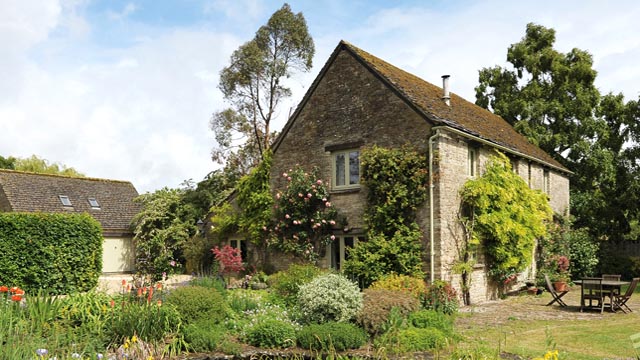Buying properties with smallholdings
Growing your own is increasingly popular which means properties with smallholdings are becoming more desirable


Home-grown produce is a flourishing currency in Britain. These days, even Londoners are taking up the spade: Tom Catchpole, an investment manager with Vestra, trades eggs laid by his three hens-Jolly, Alice and Rachel-for potatoes from a colleague's farm in Yorkshire. ‘It probably doesn't save us much money,' admits Mr Catchpole's wife, Polly, an organic-textiles manufacturer, who also grows tomatoes, squashes and courgettes in their garden in south London. ‘But it's wonderful to know where our food comes from.'
Self-sufficiency is in keeping with the nation's more frugal mood. But Edward Heaton, a buying agent with Property Vision, has found that most would-be smallholders are driven by a desire to know exactly what they're eating. ‘They like the reassurance that food hasn't been sprayed with unknown pesticides and that their chickens have lived a happy life.'
Over the past decade, Richard Girdwood of Strutt & Parker has noted intensifying demand for properties with scope to ‘live off the land', just like Tom and Barbara attempted to do in the 1970s TV series The Good Life. ‘Space for a vegetable garden is now a must-have for many buyers,' he explains.
Charlie Wells, a buying agent for Prime Purchase, has also witnessed the rise of the smallholder in recent years-and has had to adjust his skills to match his clients' demands. ‘I'm now expected to know what soil type a property has, and how much yield you can get from the strawberry patch,' he says.
The appetite for grow-your-own doesn't stop at a vegetable patch or a chicken coop. Davina and Robert Bell keep pigs, sheep and cows in rented grazing surrounding their cottage in East Anglia, and grow peppers, tomatoes and spinach throughout the year in a polytunnel.
‘A substantial proportion of the food we eat is from our own land. Our odd-shaped, homemade sausages are always a talking point at dinner parties,' comments Mrs Bell, who works at Savills. Likewise, what started as an asparagus bed and orchard in Wiltshire for James Borradaile of Jackson-Stops & Staff in Shaftesbury has matured into a sizeable smallholding, with breeding cows, sheep and chickens. ‘We wanted to know what we were eating and where it has been from birth to slaughter.'
Mrs Bell finds tending plants and animals is hugely therapeutic. ‘It's an opportunity to switch off after work and busy yourself outside. You can't think about your job when you're in the vegetable patch.'
Exquisite houses, the beauty of Nature, and how to get the most from your life, straight to your inbox.
The best smallholdings, according to Charlie Wells, are ring-fenced, with a house in the middle of the plot and outbuildings nearby. Would-be smallholders should try and buy properties with good soil quality and a vegetable garden, fencing, water troughs and coops already in place. ‘That way, you'll save on start-up costs.'
The bad news is that, in the past 10 years, rising land values have pushed up the price of these types of property. ‘What might have cost you £4,000 an acre 10 years ago could be double that now, and even more with a property attached,' he adds. Unless you plan to keep larger livestock, living off the land doesn't have to involve substantial acreage-the Catchpoles' garden in London measures less than a quarter of an acre.
But Mrs Catchpole concedes that even a small plot requires a degree of commitment, both financially and emotionally. ‘If you're going on holiday, you have to harvest your produce beforehand, and someone will need to tend your garden and animals while you're away.' As with any hobby, there's a danger that your smallholding will become a highly competitive venture. ‘Thankfully, we don't have a village fête with a biggest marrow competition,' says Mrs Bell. ‘If we did, I'd be talking to mine to make them grow.'
Perfect planting
* Choose a sunny, sheltered spot close to the house
* Your beds should be at least 3ft wide, and ideally run from north to south
* Check soil acidity and alkalinity using a testing kit
* Rotate your crops every three years using the RHS's mnemonic ‘British Rail Late': brassicas, roots, legumes
Read our weekly gardening tips at www.countrylife.co.uk/gardens
* Give Country Life for Christmas and save up to 40%
Country Life is unlike any other magazine: the only glossy weekly on the newsstand and the only magazine that has been guest-edited by His Majesty The King not once, but twice. It is a celebration of modern rural life and all its diverse joys and pleasures — that was first published in Queen Victoria's Diamond Jubilee year. Our eclectic mixture of witty and informative content — from the most up-to-date property news and commentary and a coveted glimpse inside some of the UK's best houses and gardens, to gardening, the arts and interior design, written by experts in their field — still cannot be found in print or online, anywhere else.

